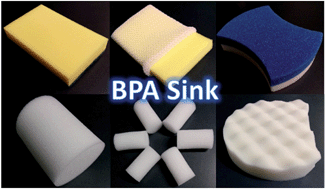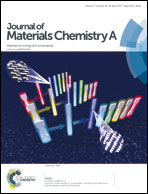Consumer-grade polyurethane foam functions as a large and selective absorption sink for bisphenol A in aqueous media†
Abstract
This study for the first time reports the unusual sorption capabilities of polyurethane foam (PUF) for bisphenol A (BPA) – a major industrial plasticizer and endocrine-disrupting chemical ubiquitously detected in environmental waters. The low surface-area material showed not only anomalously high sorption capacities, but also rapid uptake for BPA compared with activated carbon and macroreticular polymeric adsorbents. BPA sorption by PUF was driven by a solid-phase partitioning mechanism assisted by hydrogen bonding on PUF lone-pair donor groups. Using high-resolution electron microscopy, gas pycnometry, and cross-sectional infrared imaging analyses, we present new direct evidence for the partitioning of large organic sorbate into PUF through aqueous sorption: volumetric swelling of PUF fibrils induced by BPA uptake, thorough diffusion of BPA inside PUF fibrils, and hydrogen bonds between BPA and PUF carbonyl and ether oxygen groups. Building on this improved understanding of PUF sorption mechanism, we elucidated the specificity of PUF sorption by examining its sorption behaviors under different water chemistry. Quantitative recovery of BPA was readily achieved by exploiting the reversibility of PUF sorption in alkaline solutions. This work provides the first proof of concept on PUF as a large and selective absorption sink for BPA, and demonstrates the potential use of this inexpensive, easily accessible material as a superior sorbent medium for BPA in aqueous media.


 Please wait while we load your content...
Please wait while we load your content...